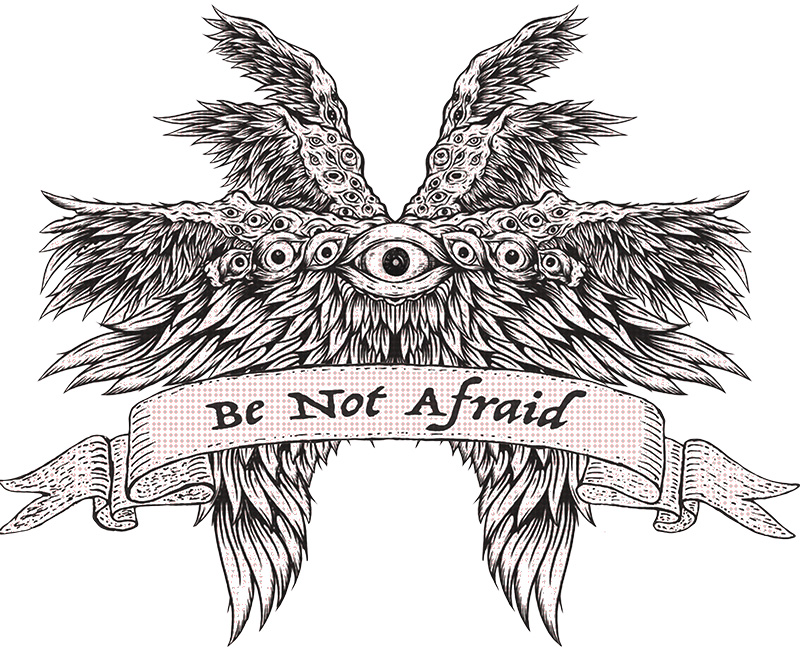The Apocalypse will take place from the evening of October 28th to the morning of October 31st.
Join us for a showcase and celebration of technologies and projects so ambitious they will fundamentally transform our world for the better — or destroy it.
Right at the peak of our last pandemic, Founders Fund hosted the first Hereticon, a “conference for thoughtcrime.” Our thinking was simple: dissent is worth protecting. Most new ideas are wrong, or useless. Some are even dangerous. But from science and technology to business and faith, progress is a history of persecuted weirdos, so that is where we stand, and that is what we celebrated. In conversation, no topic was off limits: genetic modification, natalism, parapsychology, artificial consciousness, defense, pharmacology, virology, sex, God. There were lectures, there were performances, there was, randomly and happily, a marriage. Two babies were conceived at the event, two more because of it (that we know of), and new ideas were shared in quantities at least as great as drinks consumed. Obviously, we’re doing it again. But this October, while our hope is still for guests to come and speak their mind — prepare your take, your talk, your robust defense of whatever heretical concept you believe a worthy cause — we’d like to introduce a frame for your consideration: the end of the world.
For years, Americans have obsessed with the question of our impending doom, captured especially by the role of technology in humanity’s looming final chapter, though here perspectives tend to bifurcate. First, from our nascent class of celebrity safetyists, we’re told mankind’s technological destruction is certain unless we halt interrogation and development of every field from synthetic biology to advanced computing, reducing the imagined existential risk of novel technologies to something close to zero. Concurrently, from the accelerating techno-optimists, we’re told only good has ever come, and can ever come, of technological advance. Both positions are wrong. Amidst the lingering consequences of what was probably a lab made pandemic, heightened political turmoil in a world of nuclear weapons, and, as mankind’s first synthetic mind comes closer by the day to waking up, the unknowable implications of general artificial intelligence, the truth is we are clearly at risk of cataclysm. But that is the corollary of life in an age of wonder, a precious gift impossible without the natural dangers inherent of tremendous progress. In other words: yes, we are at risk of the apocalypse, and that is good.
On the ground floor, there is some benefit in a simple discussion of risk and reward.
Humans are designed to predict and manage danger, so that’s the future we imagine in its greatest detail. But on close examination of each dystopian fantasy, there tends to be an interesting inversion: man-made climate change will kill us all, but what does that imply but humans can control the weather? The architecture of deadly new pathogens whispers of synthetic support for human immunity — an army of nanobots patrolling your bloodstream. The catastrophic blight of crops inherent of the GMO dystopias also implies, before any blight is possible, an abundance of food unprecedented in human history. Afraid of a world where genetically modified superhumans discriminate against the average guy? Consider for a moment you just used the word “superhuman,” and believed designing supermen was possible. From extinction to de-extinction, and the return of the wooly mammoth (table stakes). From rising seas to seaflooding, and the resurrection of the great Sahara plains. I see your paperclip maximizer, and raise you the Diamond Age of cities woven up, in seconds, from the Martian sands.
In the spirit of Hereticon, we invite you all — technologists, entrepreneurs, and every manner of creative dissident — to come and share your wildest dreams, with a special invitation for the most dedicated doomers and recklessly-accelerating techno-utopianists to meet and talk and yell and drink and have another few kids, who knows. What are the risks before us? What are the dangers we haven’t yet imagined? But then we’d like to pose another question, almost never considered in our ostensibly progressing society: what are the elements of our world actually worth saving?
Consider our rotting cities. Consider this election, and yet again, as chanted every year in unison, the common notion we must choose between a “lesser of two evils.” Consider our perpetual war machine. Consider our corrupted language, and what’s become of “science.” Consider the overly-medicated modern man’s atomization, and commodification, doomscrolling, or swiping profiles of people he will never meet, or chatting with (a person posing as) his favorite prostitute online, face lit blue before he goes to sleep each night alone in his box. Consider the world as it stands today, not as you’d like it to stand, but as it really presents. How much of this should be preserved?
Maybe if you aren’t trying to destroy the world, you aren’t trying hard enough.
Just a thought. Come agree and disagree and share your own.
From the evening of October 28th to the morning of the 31st, we’re hosting Hereticon II, an End of the World’s Fair, and a feast for the mind. The Apocalypse Ball — black tie or dress for dystopia, whichever — will take place on the evening of October 29th at the Faena, in Miami Beach. Short talks, open mics, debates, readings, experiments, performances, and music throughout. A party, for the most part.
Space for the fair and ball are limited, and invite only. But we’re holding a handful of tickets for the general public. If you’re interested in joining, hosting an event of some kind, or otherwise contributing, please apply — here — and sit tight for further details.
-Solana
